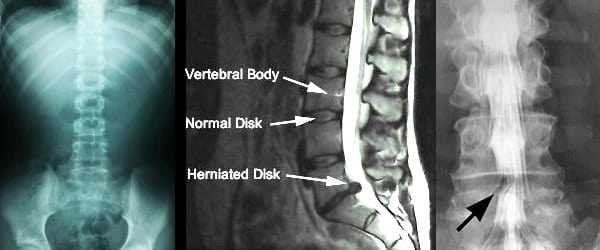

The usual advice is to carry on as normal as much as possible. In most cases, the symptoms ease off gradually over several weeks. The disc often presses on a nerve root which can cause pain and other symptoms in a leg. Those conditions may include: Herniated discs. A 'slipped' (prolapsed) disc often causes sudden, severe lower back pain. This procedure uses a needle that is inserted into the disk under X-ray guidance. A computerized axial tomography scan (a CT or CAT scan) or a magnetic resonance imaging test (an MRI) both can show soft tissue of a bulging disc. This tests to see if there is any associated nerve damage. Intermittent sharp stabbing pain in the upper back, mid-back, or even lower back. However, it most often occurs when age-related spinal degeneration causes conditions that push against the nerve. An x-ray can show a narrowed disc space, fracture, bone spur, or arthritis, which may rule out disc herniation. Common symptoms are: Intermittent sharp stabbing pain in the upper abdomen or back, followed by a dull, achy sensation. A herniation may contain nucleus pulposus, vertebral endplate cartilage, apophyseal bone/ osteophyte and annulus fibrosus.ĭisc herniations can be divided into groups in a variety of ways. Slipping ribs can create many different types of pain. The doctor can use an X-ray to look for pressure on your nerves and spine by injecting a dye into your body. Herniated discs will not show up on an X-ray. Disc herniation refers to the displacement of intervertebral disc material beyond the normal confines of the disc but involving less than 25% of the circumference (to distinguish it from a disc bulge). If your doctor is not sure that your symptoms are caused by a herniated disc, they may do an X-ray to rule out other health issues, such as a broken bone or a tumor.


 0 kommentar(er)
0 kommentar(er)
